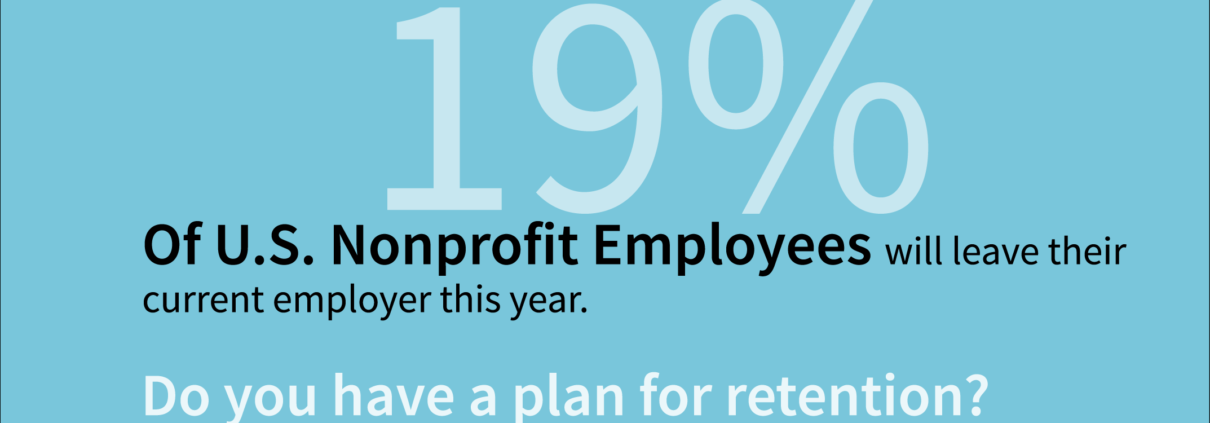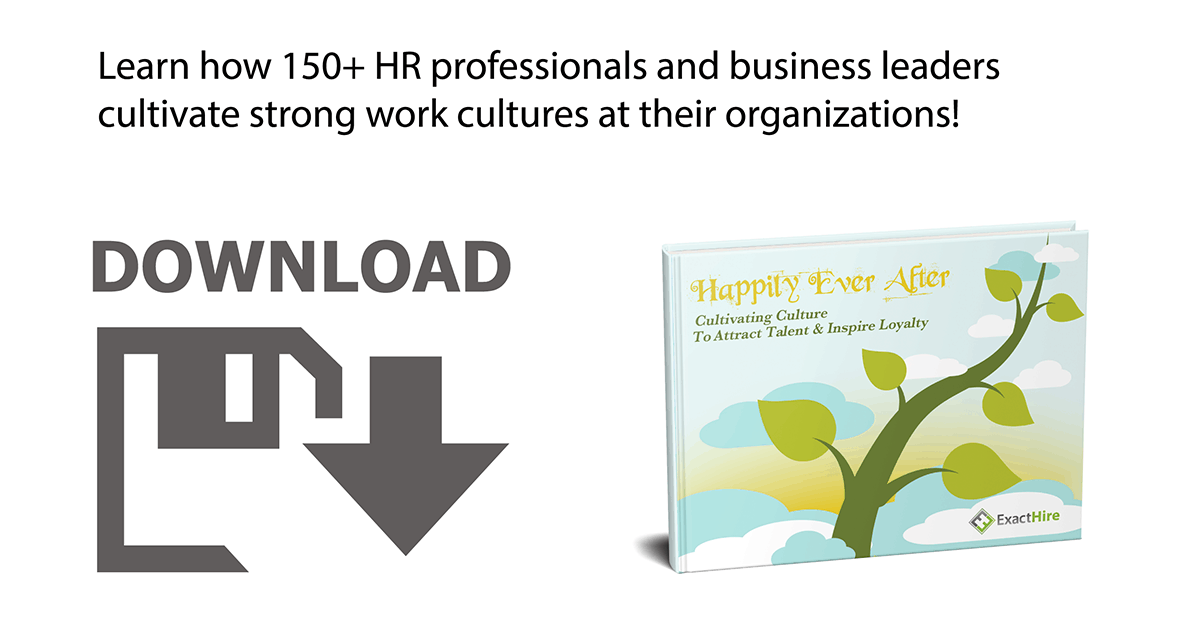Nonprofit Employee Retention
In a recent survey of nonprofit leaders conducted by GuideStar and Nonprofit HR, approximately 56% of respondents named their top staffing challenge as either “finding qualified staff,” or “hiring qualified staff.”
Employee retention was considered a top challenge by only 13% of those surveyed. This is curious, considering that the voluntary turnover rate for nonprofits is 19% annually–well above the all-industry average of 12%. The survey also showed that only 16% of nonprofits have a plan for employee retention.
If nearly 1 in 5 nonprofit employees voluntarily leaves his or her job each year, then it is safe to say that nonprofits face a big challenge with employee retention. So why do most nonprofit leaders fail to recognize it as a top challenge? And if they do recognize it, why do they not have a plan to address it?
Replacing Problems With a Platitudes
Most nonprofit leaders probably recognize that employee turnover is a challenge. They may even recognize that the employee turnover rate is high at their organizations. However, that doesn’t mean that they believe it’s a problem…or even important. Perhaps that’s because of a deep-seeded belief among nonprofit leaders that high employee turnover is inevitable for nonprofits.
If high employee turnover is believed to be inevitable, then employee retention transforms from a problem (to be solved) into a condition (to be explained). This condition prompts two unfortunate phrases: “they knew what they signed up for” and “do more with less”.
They Knew What They Signed Up For
Nonprofit employees have a passion for the mission of their organizations. This passion can drive them to put mission ahead of fair compensation and a reasonable work schedule. They accept lower pay and work longer hours–most will not qualify for overtime pay. These employees–in the minds of nonprofit leaders–expect these conditions.
With this belief in place, nonprofit leaders may react to employee discontent by thinking: They knew what they signed up for. Lower pay, longer hours, doing more with less…that’s simply the nature of a nonprofit. But what are the outcomes of that approach? Often it’s employee stress, burnout, and turnover.
Quite simply, “they knew what they signed up for” is an easy phrase that glosses over–or even dismisses–a complex challenge, which is: How to retain great employees while also maximizing resources in advancement of the mission. The phrase allows leaders to ignore the first part of the challenge, “retain great employees” and instead focus on the second part, “maximizing resources.”
Unfortunately, that focus on maximizing resources is often at the expense of employee retention. This is where our other unfortunate phrase comes into play.
Do More with Less
Nonprofit employees are often asked “to do more with less.” A simple example takes the form of understaffing, but the use of outdated technology, an aversion to outsourcing tasks or projects, and limits on employee benefits can all be justified by the mantra of “do more with less.”
On the surface this charge seems reasonable, even honorable. After all, if the success of a non-profit is measured by its ability to maximize resources in advancement of its mission, then “doing more with less” should be a good thing. But this phrase is often applied so broadly that nonprofit employees find themselves constantly hamstrung in completing even the most basic tasks.
When “doing more with less” reaches such absurd levels, nonprofits cannot hide from the fact: they are overworking and underpaying employees.
A Focus On Effectiveness
Phrases like “do more with less” and “they knew what they signed up for” are given too much credence; they mask complex challenges with simple concepts rather than providing effective solutions. Unfortunately, there’s a prevailing belief in the nonprofit world that these phrases represent the natural balance of things, and to upset that balance would be selfish and take away from the mission, or even put oneself before it.
Successful, high-functioning nonprofits focus on operational effectiveness, which is not driven by easy-to-remember cliches or rules of thumb. Effectiveness requires continual improvement, testing new approaches, and the willingness to invest in tools that may even result in employees doing less.
Doing less?!
Yes. Cutting overhead expenses is a straightforward way to maximize net revenue. But too often, nonprofit leaders cut so deep that they create absurd inefficiencies. This leads to low productivity and, ultimately, lower revenue.
Take, for example, an organization that relies on file cabinets, folders, and physical document management. The organization saves funds by not investing in an online forms service, secure cloud storage, software integration, and the time or outside expertise needed to implement.
The employees do more with less; they print and file forms, respond to file requests, make copies, deliver files, retrieve files and re-file those files.The employees are certainly doing more, but is that the most effective way to manage documents? Is it maximizing skills and talent in advancement of the organization’s mission?
You would be hard pressed to answer yes. With the number of free or low-cost solutions on the market, physical document management is difficult to justify. Even companies who manage information with email, spreadsheets, and word docs are finding that there are more effective solutions available.
Going beyond this specific example, nonprofit leaders must be open to exploring and investing in new solutions that increase effectiveness and lead to higher productivity and net revenue. When nonprofit leaders ask staff to do more with less, something has to give…and usually it’s the employees, followed by productivity and revenue.
Serving Employees Through The Mission
With only 16% of nonprofits having a plan for employee retention, it’s not a stretch to assume that the majority of nonprofit leaders have responded to the challenge of high employee turnover with “they should know what they’re signing up for.” Passing blame for employee turnover to the employees themselves is expedient, but it’s far from an effective solution for employee retention. So what is?
If nonprofit leaders truly want to address employee turnover, then they must take an honest look at the culture of their organizations, the mantras that they abuse, and–perhaps most importantly–how the nonprofit’s mission serves its employees.
There is something special about a nonprofit where the employees get just as much out of working for the organization, as do the people who are served by its mission. I know this firsthand.
Nonprofit leaders who take a holistic view of mission, who understand and value how it touches the lives of everyone, will better position their organizations to hire and retain great employees, increase operational effectiveness, and maximize resources in advancement of their missions.










 15% OFF FULL-SERVICE HIRING • APPLICANT TRACKING SOFTWARE • ONBOARDING SOFTWARE
15% OFF FULL-SERVICE HIRING • APPLICANT TRACKING SOFTWARE • ONBOARDING SOFTWARE